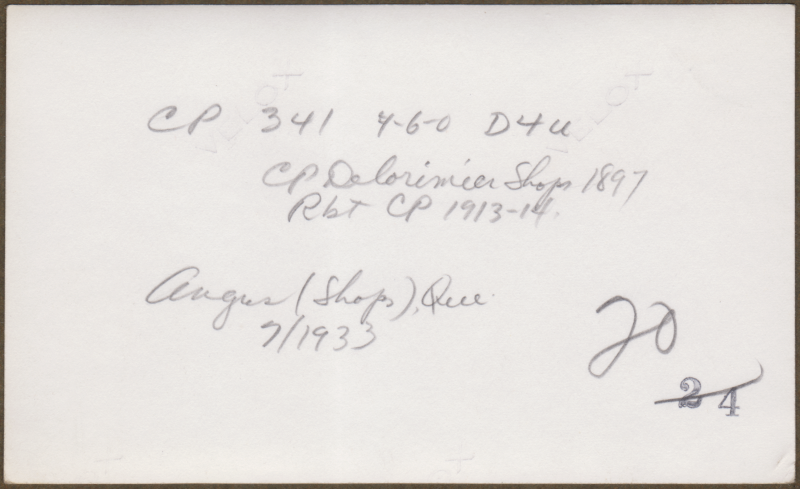The interest rate was about 12% on our house mortgage when I bought a little collection of small-format CPR steam prints in the late 1980s. I have since regretted not buying the matching CNR set as well.
... However, considering inflation, the two little sets would have topped $285 (in 2023 dollars). And back then I was more interested in the CPR. Our interests probably broaden as we mature.
With the power of today's cost-free internet, I can now add some of these to the selection of CPR steam images already 'out there'.
If you decide to 'right click' to 'save as' ... you'll note these are kind of over-described. This is just to help the search engines differentiate them from images of cardio pulmonary resuscitation.
* * *
A few added details ...
If only to satisfy my curiosity, I have tried to fill in basic missing details such as builder and scrapping date. More interesting detailed information for each engine ... such as the addition of a superheater, brake equipment type, assigned territories, and type of service are generally lost to history.
The change from wood to coal or oil fuel, link & pin to Janney-style couplers, addition of superheaters, etc, probably happened (in most cases) in slow waves across the entire roster when major rebuilds were scheduled. The Great Depression of the 1930s would have seen many older locomotives in limbo - waiting for an economic upturn ... or scrapping.
... I was just reading this week that major rebuilds of large locomotives were still occurring at CNR's Stratford shops in late 1958 ... so the extended bureaucracy of the railways wasn't always perfectly logical and economically efficient when it came to the management and maintenance of its steam motive power.
Supplemental data comes from: Canadian Pacific Steam Locomotives; Omer Lavallée; 1985; Railfare.
* * *
They only had 9999 numbers to use ...
If my careless, limited research is correct, the 456 (below) went through 3 re-numberings in its 40 years of existence. While Lavallée's data is no doubt extremely thorough and accurate, it still takes some patience to trace the careers of some locomotives from cradle to grave.
... Never was it in the Canadian Pacific Railway's priorities to re-number blocks of engines exactly consecutively in new blocks to make it easy for casual researchers 100 years later. Sometimes, it seems that they did a few two-handed riffle-shuffles of their motive power 'cards' ... when renumbering.
... You can imagine - however - that during a given decade, the blocks of re-numberings had to 'make sense' for: roundhouse & shop staff, dispatchers, operators, collective agreements (where pay was based on 'weight on drivers') and engine crews.











